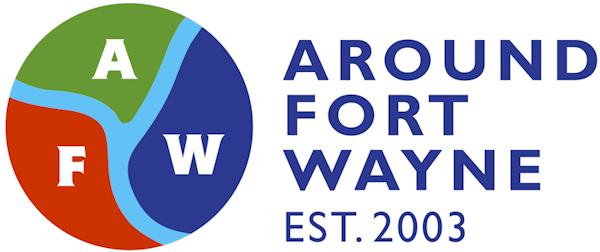![]()
Press release from the City of Fort Wayne:
More than 100 homes cleared of lead paint hazards under HUD grant
HUD approves extension to allow more families to be assisted
Mayor Tom Henry joined representatives from the City of Fort Wayne, the Fort Wayne-Allen County Department of Health and the St. Joseph Community Health Foundation today to mark a milestone in their combined efforts to reduce lead paint hazards in homes. They were recognizing a home that had undergone lead hazard clearance work after two children who live there were found to have elevated levels of lead in their blood. A $1.89 million grant from the Department of Housing and Urban Development (HUD) was awarded to the collaborative to address the issue of lead hazards in homes.
Recently, the group finished clearing its100th house of lead paint hazards. Most homes built before 1978 contain some lead-based paint. Lead-based paint is more common and was used more extensively in homes built before 1950. Much of Fort Wayne’s housing stock falls into this age. Lead from paint chips, which you can see, and lead dust, which you can’t always see, can both be serious health hazards. The health concern is mainly for children under 7, whose brains are still developing and are particularly susceptible to long-term health issues if the exposure continues. They are identified through blood tests which can show elevated levels of lead.
“All parents want to keep their children safe and healthy,” said Mayor Tom Henry. “In our city, many families live in older houses that may have some of these hidden dangers, like lead-based paint. We need to help address this danger to help protect the children who live in or visit these homes.”
A child is identified as “lead poisoned” by a physician or through community outreach efforts by Allen County Healthy Homes Program, which is co-sponsored by the St. Joseph Community Health Foundation and the Fort Wayne -Allen County Department of Health.
“Children’s bodies take in lead more easily, and even a small amount of lead can cause irreversible brain damage and lead to behavior problems,” says Allen County Health Commissioner Dr. Deborah McMahan. “Unfortunately, a child who is lead poisoned may not look or feel sick. The only way to know for sure is to have the child tested.”
When a child has been identified as being “lead poisoned,” their home is targeted for remediation. The remediation may consist of removing deteriorated segments of lead-based paint in a lead-safe manner, and repainting with lead-free paint. More severe cases may require more extensive remediation, such as replacing doors, windows or trim, or covering a contaminated surface with drywall and caulking it to ensure no dust escapes.
When the lead hazard control interventions are finished, a clearance test must determine if the home’s clean up is now completed or if more work is needed before children can live there safely.
Rick and Dawn Mault and their two toddlers now live in a home that has been cleared of its lead-paint hazards. Their twin boys were tested by their family doctor during a regular checkup and one of them was identified as lead poisoned. Experts say if someone suspects their home has lead hazards, there are a few things they can do to reduce their family’s risk:
- Renters should notify landlords about any peeling or chipping paint
- Clean up paint chips immediately in a lead-safe manner
- Clean floors, window frames, window sills and other surfaces weekly (with warm water and a general, all-purpose cleaner)
- Keep children from chewing window sills or other painted surfaces
- Clean or remove shoes before entering the home to avoid tracking in lead from soil
- Wash children’s hands often and feed them foods high in vitamin C, iron and calcium
- If the children are under the age of 7, have them tested for lead poisoning.
For more information on Lead Poisoning Prevention and how to create a Healthy Home Environment, consult the www.allencounty-clpp.com or contact the hotline (260) 449-8600. A questionnaire helps parents of children aged 1 – 6 determine if they need to consult with their physician. If you have additional questions, contact either the Department of Health or the St. Joseph Community Health Foundation which have staff available for group presentations or private consultations.
The grant is administered by the City of Fort Wayne’s Office of Housing and Neighborhood Services (OHNS), which also administers several million dollars in grants from HUD to address housing and public service needs in the City. Not only is OHNS the fiscal agent for the grant, it provides staff and contractor expertise in performing housing rehabilitation to satisfy the requirements of the grant.
Initially, the grant was expected to result in 150 more lead safe housing units in Fort Wayne over a 3-year period. Recently, the 100th housing unit was completed, and HUD granted the City a one year extension to meet the original plan.
The grant estimated $8,000 as the average cost per unit to address the lead hazards. In practice, and with changing legislative requirements, most units have required between $8,000 and $12,000 to address the need. In the Mault family’s case, a few doors and windows were replaced and walls were painted in the dining room and basement to remove any lead paint hazards.
As parents will attest, the cost is not the most important aspect of the situation. “I feel so much better,” said Dawn Mault, homeowner of a newly-cleared house and mother of twin toddlers. “I was able to be educated by the health department and learn about lead poisoning. Initially I was very scared but I am so grateful that my house is now safe for my children to be in.”
















Just why can’t our government force a homeowner (renting or living in the home) to correct problems in a building that has been shown to cause high levels of lead in children seven and younger? Also, the 150 home number was not reached in the time period set by HUD – was this because not enough under seven year olds have been shown to have the problem? If this is the reason, why is the continuation necessary? Or is the $200,000 in the grant, not yet used up, to pay the salaries of those in the employ of our city governmment who run the program? Who follows up on something like this? Isn’t it the ‘fox guarding the hen house’ syndrome?